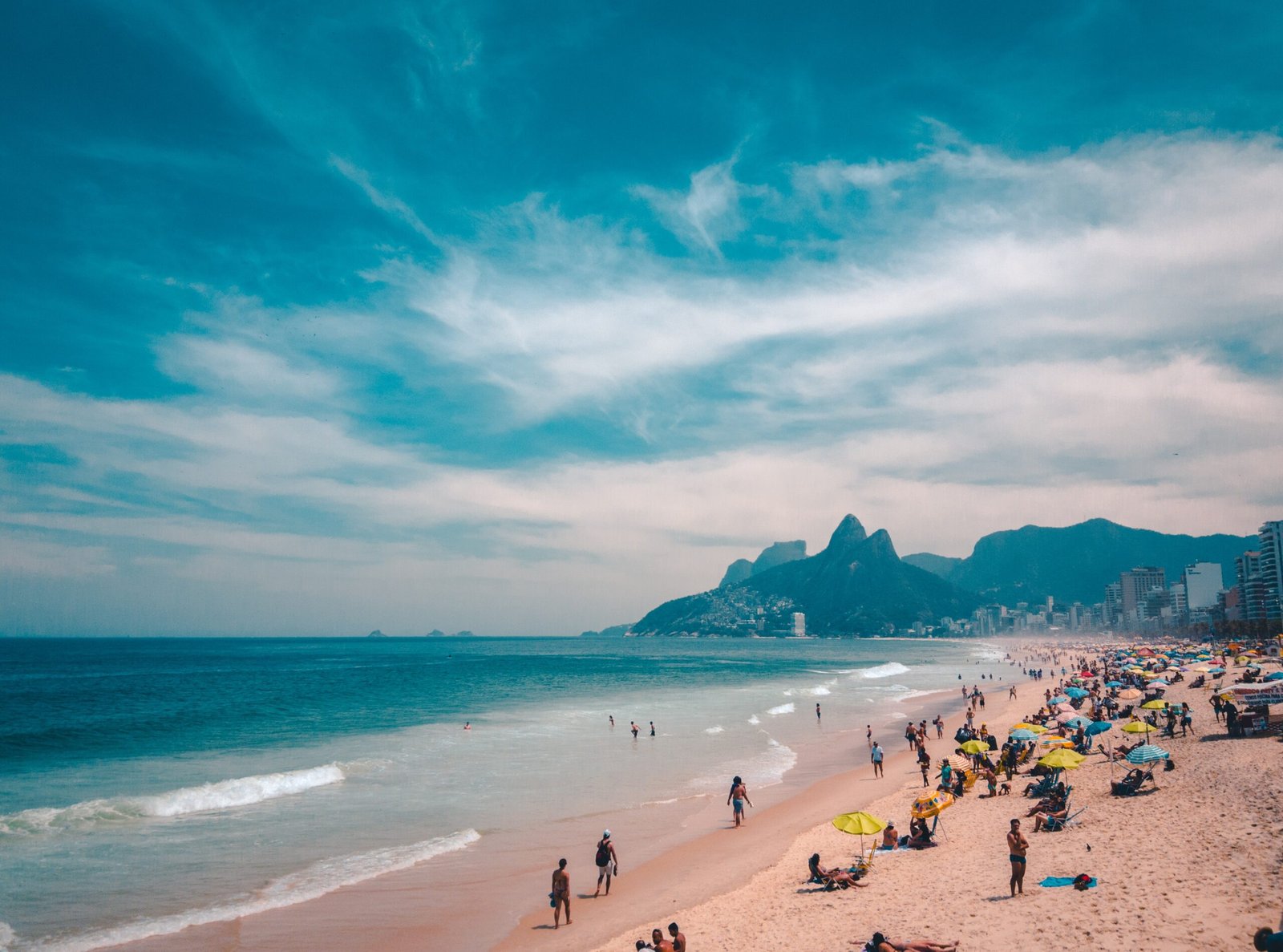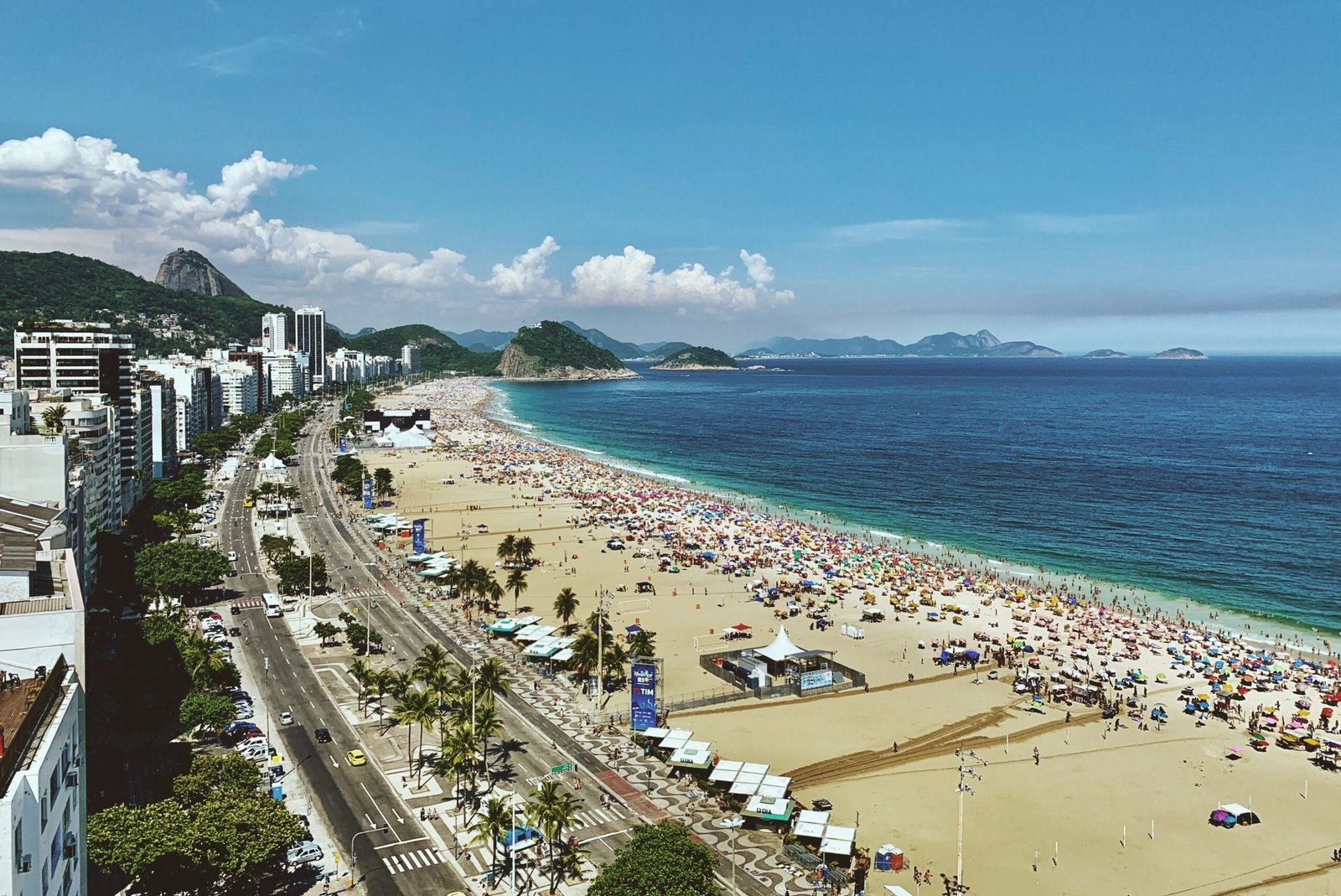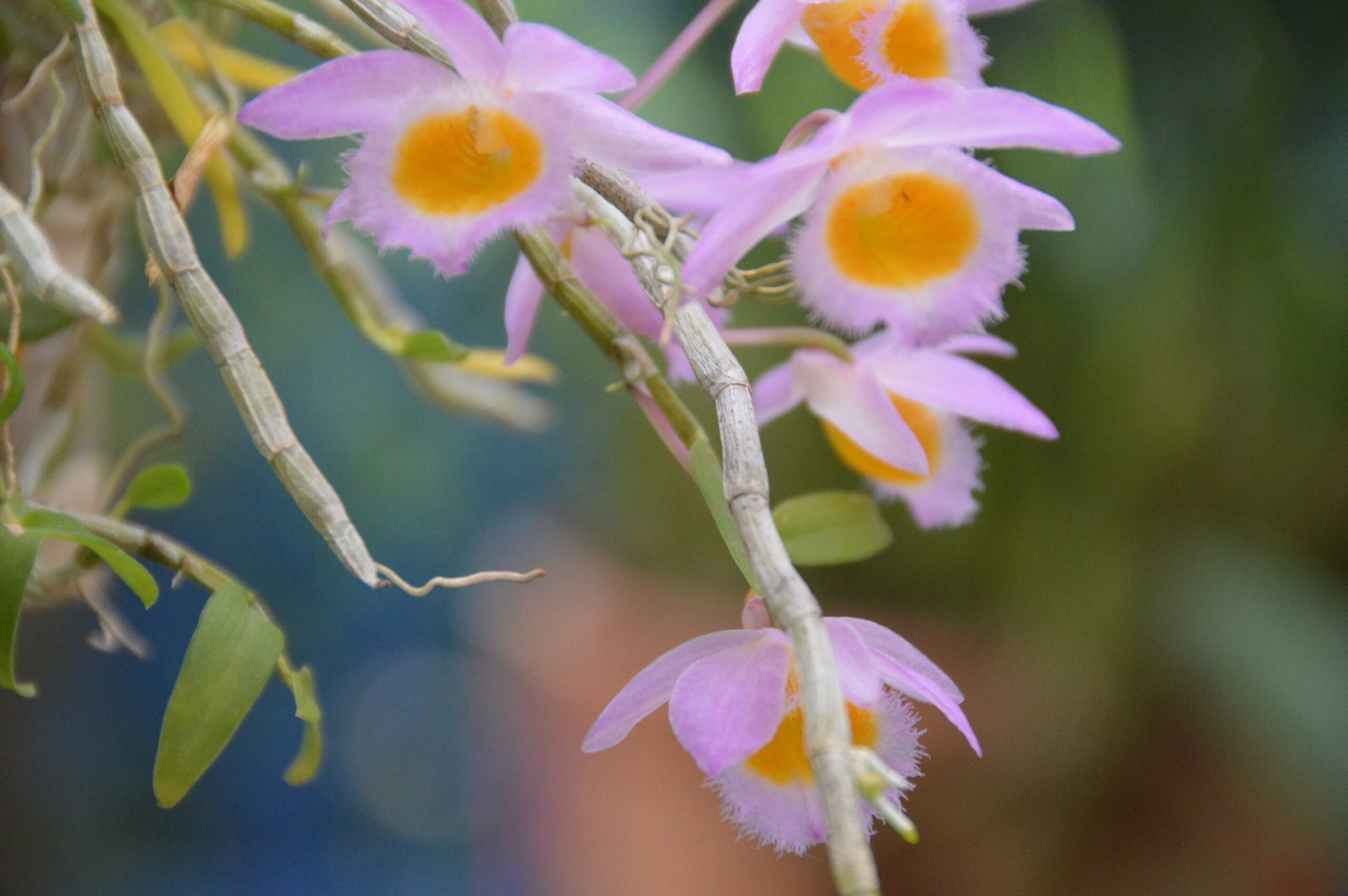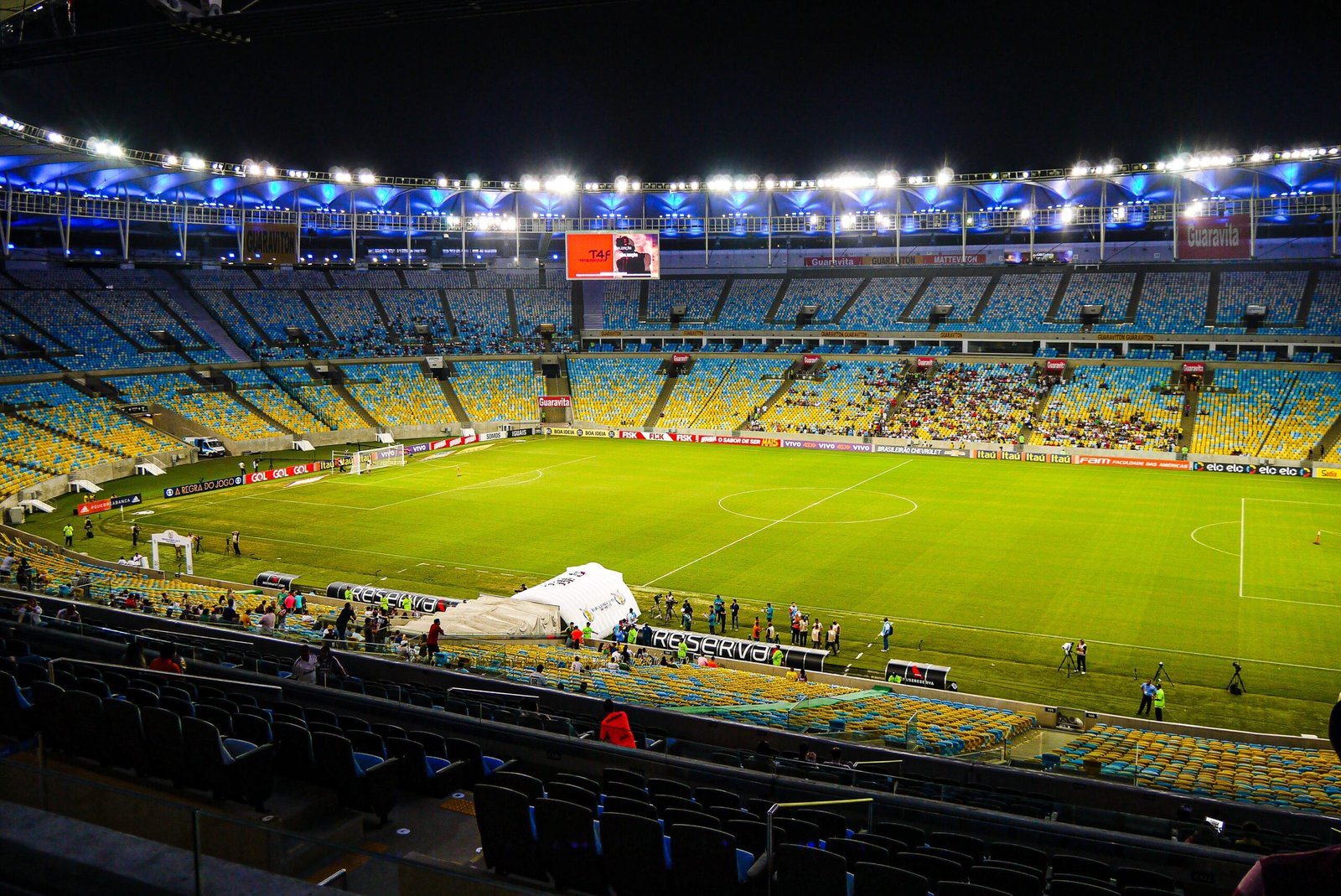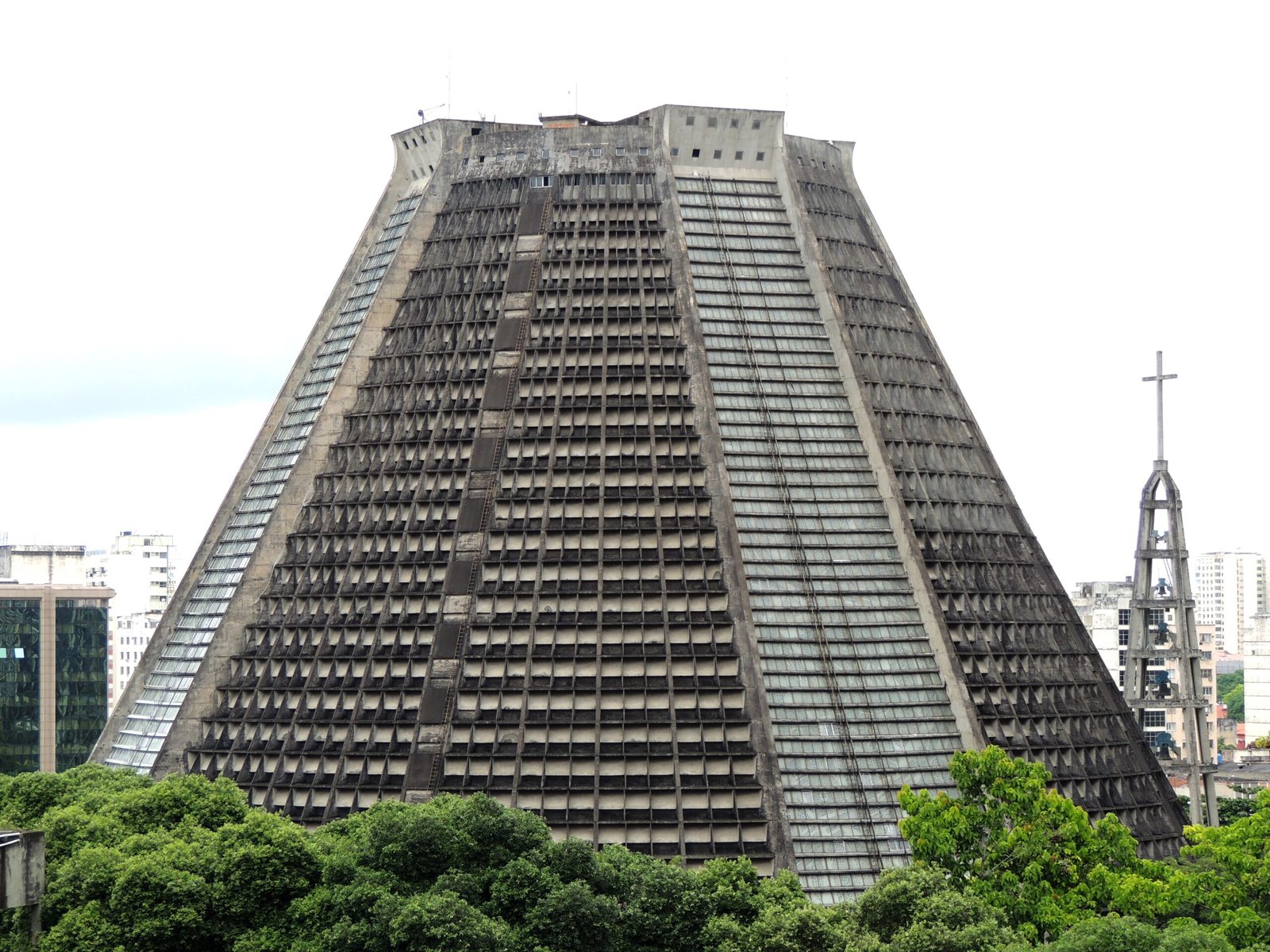19 Top-Rated Tourist Attractions in Rio de Janeiro [2023]
If you are thinking of traveling to Rio de Janeiro then you have come to the right place, because here we have marked 19 top tourist attractions in Rio de Janeiro. Its spectacular mountains and beaches make it amazing and it is also the second major city in Brazil. UNESCO has given Rio a World Heritage Site status, citing the stunningly beautiful location as well.
It is definitely a great tourist destination, its natural setting and urban cultural landscape set it apart. Rio de Janeiro’s mix of architecture and the city’s development help make it a wonderful destination. This is the reason why tourists from every corner of the world come here to enjoy the splendid atmosphere here.
The city is said to have been founded by Portuguese colonists in the mid-1500s and became a port for gold shipments from inland mining areas. Rio’s long crescent beach is amazing and is actually one of its main tourist attractions.
You can’t help but admire the iconic buildings from each era, along with its rich supply of history and urban parks and open spaces. Take a look at our list of the top attractions in Rio de Janeiro and enjoy all that this beautiful city has to offer.
1. Cristo Redentor (Christ the Redeemer)
Photo by Marcos Paulo Prado on Unsplash
Perched on the 705-meter summit of Corcovado is a colossal statue of Jesus Christ, overlooking the city of Rio de Janeiro. The statue is widely recognized as an icon of Rio as the iconic figure of Sugarloaf, and Brazilians regard this world-famous landmark as a symbol of hope and peace.
The construction of the world-famous statue started in 1922 and was completed in 1931. It was designed by Brazilian engineer Heitor da Silva Costa and sculpted by French sculptor Paul Landowski, with the face of the statue being sculpted by Romanian sculptor Gheorghe Leonida.
Reinforced concrete and soapstone have been used to make the statue, the figure is 30 meters tall, with arms spanning 28 meters; Its weight is 635 metric tons. Considered one of the New Seven Wonders of the World, it is located on top of Corcovado Mountain, accessible by a train running through the Tijuca Forest National Park.
If you want to explore more take in the morning light on guided early access to the Christ Redeemer Statue with an optional Sugarloaf Mountain Tour and enjoy a cable car ride up Sugarloaf Mountain for more stunning views Can take It is visited by millions of tourists every year and is a popular and spectacular spot for both locals and tourists to watch the sunset over the city.
2. Sugarloaf
Photo by Agustin Diaz Gargiulo on Unsplash
Sugarloaf Mountain is a 396-meter granite peak located in Rio de Janeiro. It is one of the city’s most famous landmarks and is known for its distinctive shape and panoramic views of the city, Guanabara Bay, and the surrounding area.
Sugarloaf Mountain is located in the Urca neighborhood of Rio de Janeiro and can be reached from Praça General Tiburcio to the top of Morro da Urca by a cable car that takes visitors from the base of the mountain to the summit.
Enjoy a few minute rides on the cable car, as well as stunning views of the city and surrounding landscape. Once at the top of Sugarloaf Mountain, visitors can enjoy panoramic views of the city, take photos, and relax at the observation deck.
There are three forts on Cara de Cao, of which the 16th-century star-shaped Fort São João is open to the public. Sugarloaf Mountain is a top tourist attraction in Rio de Janeiro and is visited by millions of people each year.
3. Ipanema
Photo by João Pedro Vergara on Unsplash
Heading west from Copacabana’s four-kilometer shore, you’ll find Ipanema, known for its beach, which stretches for about 1.6 kilometers and is also one of the most famous in the world.
The beach is popular for swimming, sunbathing, and surfing, thanks to the snacks and drinks available here. The beach, with hotels, restaurants, and bars to welcome you, is a popular destination for tourists and locals alike.
Ipanema is also home to several landmarks and attractions, including the Ipanema Tower, a skyscraper that offers panoramic views of the city, and the Military Police Pacifying Unit, established in 2008 to help combat crime in the area went.
It is also known for its upscale shopping and dining options, and it is here that you can visit many trendy boutiques and restaurants and do some shopping for yourself or savor some gourmet fare.
The neighborhood also has several parks and green spaces, including Jardim de Ala and Parque Garota de Ipanema, a small park named after the famous song “The Girl from Ipanema”.
In addition to its natural beauty, Ipanema is also home to several cultural institutions and events, such as the Museum of Modern Art and the Ipanema Art Fair, which is held annually and showcases the work of local artists. It is also known for its nightlife, with many bars, clubs, and music venues that stay open until late.
4. Copacabana
Photo by Eelco Böhtlingk on Unsplash
Located in the south area of the city of Rio de Janeiro, Copacabana is one of the top tourist attractions. It is known for its beach, which stretches for about 4.5 kilometers, and is considered one of the most famous in the world.
The beach is lined with hotels, restaurants, and bars, and is a popular destination for tourists and locals alike. Copacabana is also home to several landmarks and attractions, including the Copacabana Fort, which was built in 1914 and now houses a museum, and the Copacabana Palace Hotel, a luxurious and historic hotel that has been frequented by many celebrities over the years.
Copacabana is a great place known for its nightlife and entertainment. The beaches here are often crowded with people till the early hours of the morning. In addition to the beach, the neighborhood also has several parks and green spaces, including the famous Jardim de Alah, a park that is home to several statues.
There are also several sports facilities in the area, including fields and courts for beach volleyball and other sports. The neighborhood is also home to several important cultural institutions, such as the Casa de Cultura Laura Alvim, a cultural center that hosts concerts, exhibitions, and other events, making it one of the top tourist attractions in Rio de Janeiro.
Photo by Ferran Feixas on Unsplash
Carnival is one of the most famous pre-Lenten celebrations in many countries – such as those in Venice and New Orleans. Carnival takes place in Rio de Janeiro spectacularly each winter. Usually, this celebration starts soon after the new year.
Rio Carnaval is a week-long celebration that includes elaborate oats, music, and costumed performers, and attracts hundreds of spectators to its street parades, samba parties, and shows.
It is also a major tourist event in Bahia and Recife, but the most famous Carnaval celebration takes place in Rio de Janeiro, Brazil, where it is a major tourist attraction.
The most amazing events here are the parades of the samba schools, held in a unique venue designed by renowned Brazilian architect Oscar Niemeyer.
Parades of samba schools are a highlight of the carnival and are known for their elaborate oats, and dance performances the Sambodromo is a long parade route lined with stadium-style boxes that can hold up to 90,000 spectators in a parade of costumed dancers
6. Tijuca National Park
Photo by Raphael Nogueira on Unsplash
Tijuca National Park is the largest urban national park in the world, covering an area of approximately 32 square kilometers and enclosing the Cristo Redentor, a life-size statue of Christ on Corcovado.
It is home to a diverse range of plant and animal life and is known for its dense Atlantic Forest vegetation and its many waterfalls.
The park is home to a wide variety of plant and animal species, including many species of birds, mammals, reptiles, and amphibians, most of the trees are native species and home to capuchin monkeys, quatís (Brazilian raccoons), colorful toucans, hawks, fantastic Blue butteries and many other species of wildlife call it home.
It was established in 1961 to protect the Tijuca Forest, a dense forest of Atlantic Forest vegetation that had been extensively deforested for the cultivation of coffee. The forest was replanted in the mid-19th century as part of an ambitious effort to restore the natural environment of the city of Rio de Janeiro.
In addition to its natural and cultural attractions, Tijuca National Park is a popular destination for outdoor activities such as hiking, mountain biking, and rock climbing. Here visitors can also participate in guided tours and educational programs, which makes it one of the Top Tourist Attractions in Rio de Janeiro.
7. Jardim Botânico (Botanical Garden)
Photo by Nádia A. Maia on Unsplash
The Jardim Botánico is located in the south of Rio de Janeiro, near the neighborhoods of Gavea, Leblon, and Lagoa. It is considered one of the city’s upscale neighborhoods and is famous for its large, luxurious homes and apartment buildings.
The Jardim Botanico proper is a large botanical garden that was established in the 1930s and houses a wide variety of plants, trees, and owners from around the world. It is a popular destination for tourists and locals alike and has beautiful green spaces and peaceful surroundings to stroll through the gardens under Pau-Brasil trees.
Jardim Botánico is home to several other popular attractions, including the Brazilian Museum of Natural History, the Rio de Janeiro Planetarium, and the Rio de Janeiro Zoo.
There are many restaurants, cafes, and shops within walking distance, making it a great place to spend a day exploring. Overall, the Jardim Botánico is a vibrant part of Rio de Janeiro, and with its beautiful green spaces, cultural attractions, and great atmosphere, it is one of the top tourist attractions in Rio de Janeiro. One of the most fun things to do here is to take a ride on the Electric Cart Tour.
8. Prainha Beach
Photo by Shot by Cerqueira on Unsplash
Prainha Beach is a small beach that is popular with surfers and locals. It is known for its strong waves and consistent surf, making it a great spot for surfers of all skill levels. The beach is surrounded by lush vegetation, and there are several hiking trails that offer beautiful views of the beach and the surrounding area.
The beach is relatively secluded and is not as crowded as some of the more well-known beaches in Rio de Janeiro, making it a great spot for those looking to escape the crowds. Despite its secluded location, the beach is easily accessible by car or public transportation.
Prainha Beach is a great place to spend a day relaxing, surfing, or enjoying the beautiful scenery. Whether you are a local or a visitor to Rio de Janeiro, Prainha Beach is definitely worth a visit.
9. Santa Tereza and Escadaria Selarón
Photo by AXP Photography on Unsplash
Santa Teresa is a neighborhood in downtown Rio de Janeiro known for its cobbled streets, colonial-style homes, and bohemian atmosphere. It is located on a hill overlooking the city of Rio and is one of the most historically and culturally rich areas of the city.
It is also home to several cultural institutions, such as the Museum of Santa Teresa, which houses a collection of Brazilian art, and the Casa de Rui Barbosa, a historic mansion that once belonged to the famous Brazilian jurist and politician Rui Barbosa.
Escadaria Selarón is a famous escalator located in the Santa Teresa neighborhood. It was created by Chilean-born artist Jorge Celarón, who began working on the project in 1990. The staircase is made of over 2000 tiles of various colors and designs, many of which were donated by people from all over the world.
The staircase has become one of the most popular tourist attractions in Rio de Janeiro and is considered a masterpiece of folk art. Selaron worked at Stairs until his death in 2013.
It is a vibrant and colorful place where locals and tourists alike come to admire the colorful mosaics, take photographs and relax at the many bars and restaurants that line the street. It is an iconic spot for Rio de Janeiro and a must-see for any visitor.
10. Maracanã
Photo by AXP Photography on Unsplash
Maracana is a football stadium located in Rio de Janeiro, Brazil, and the stadium is used by Rio’s major football clubs, Flamengo, Botafogo, Fluminense, and Vasco da Gama, as well as for concerts.
The Maracana has undergone several renovations and upgrades over the years, including the installation of a new roof and the construction of additional seating. Despite these changes, the stadium has retained much of its original charm and remains an important part of Brazilian football culture.
It is one of the most iconic football stadiums in the world and has a seating capacity of over 78,000. The Maracana has hosted several important football matches, including the 1950 FIFA World Cup Final, the 2014 FIFA World Cup Final, and the 2016 Summer Olympics. It is named after the Maracana neighborhood in Rio de Janeiro, known for its large stadium and passionate football fans.
11. São Bento
Photo by Andrew Seaman on Unsplash
The Monastery of São Bento in Rio de Janeiro is a historic religious site and cultural site in the city. It was founded in 1590 by Benedictine monks and is considered one of the nest Benedictine complexes in Brazil.
The monastery has a church, a library, several chapels, and museums with collections of religious artifacts and works of art. The most striking feature of the monastery is the ornate decoration in the church, which includes intricate tilework and frescoes.
The library is also an important feature in the monastery, with an extensive collection of rare books and manuscripts, many of which date back to the 16th century.
The monastery is open to the public for visits, however, it is still an active place of worship and visitors are expected to be respectful and observe proper decorum.
A visit to the Monastery of São Bento is an excellent opportunity to learn about the religious and cultural heritage of Rio de Janeiro and to appreciate the beauty and artistry of the site.
12. São Francisco da Penitência
Igreja da Ordem Terceira de São Francisco da Penitência, which is divided into three sections with separate entrances. The simple façade of this church is within the money and you will find the decoration of this church very breathtaking.
Among those who contributed to the decoration of the interior were Manuel and Francisco Javier de Brito, two prominent Portuguese sculptors and woodcarvers, whose best work can be clearly seen in this church.
The ceiling of the choir of the Igreja da Ordem Terceira de São Francisco da Penitência features one of the earliest examples of trompe-l’oeil painting in Brazil. The painting is thought to have been completed in 1736 by the artist Caetano da Costa Coelho, who later went on to paint the ceiling of the nave in a similar style.
The Igreja da Ordem Terceira de São Francisco da Penitência is an important cultural and historical site and is open to visitors year-round. It is an interesting place for those interested in religious architecture, art, and history.
13. Quinta da Boa Vista
Quinta da Boa Vista is a park and former royal palace located in the São Cristóvão neighborhood of Rio de Janeiro, Brazil. The palace was built in the 19th century for Emperor Pedro II, and it served as his residence during the summers. The palace and its surrounding grounds have been converted into a public park, which is now a popular spot for locals and tourists alike.
The palace itself is an example of 19th-century Neoclassical architecture, and it features ornate facades, grand staircases, and ornate interiors. The palace is now open to the public, and visitors can tour the palace and see its various rooms and exhibits. In addition to the palace, the park features gardens, a lake, a zoo, and a number of other attractions.
The palace is today one of the main cultural attractions of the city, receiving a large number of visitors daily. It houses the Museum of the Republic, with collections of objects related to the history of Brazil and exhibitions of international art, such as prints and sculptures.
The park is a great place to spend an afternoon, visiting the different attractions and taking in the natural beauty of the area.
14. Teatro Municipal (Municipal Theater)
Photo by Mauro Lima on Unsplash
The Teatro Municipal in Rio de Janeiro is a historic theater located in the heart of the city. It was built in the early 20th century and has been an important cultural and architectural landmark in Rio de Janeiro ever since.
Highlights here include sculptures by Heinrich Bernardelli and paintings by Rodolfo Amoedo and Eliseu Visconti, as well as drop curtains, proscenium friezes, and ceilings. The theater has played an important role in the cultural life of Rio de Janeiro and has hosted a wide variety of performances, including opera, ballet, and theater productions.
Over the years, the Teatro Municipal has undergone several renovations and restorations, the last one finished in 2019, to preserve its historic architecture and ensure that it remains a vibrant cultural center for the city. Today, the Teatro Municipal continues to be a major cultural destination for tourists and locals alike.
15. Nossa Senhora do Carmo and Monte do Carmo
The Parish Church of Nossa Senhora do Carmo is located in the city of Rio de Janeiro, Brazil, this church was the Capela Real (Royal Chapel) from 1808 to 1889. There is a second Carmelite church connected by a passage, Monte do Carmo, begun in 1755.
This church is one of the oldest in Rio de Janeiro, highlights are its Baroque façade, stone gates, and the chapel of the Novitiate Mestre The white and gold engravings are by Valentin. Which was built in the 18th century. The church has a distinctive twin-faced façade and a prominent dome and is an important example of Baroque architecture in the city.
Highlights are its Baroque façade, stone doorways, and white and gold carvings by Mestre Valentim in the Chapel of the Novitiate and the church is an important cultural and religious site in Rio de Janeiro.
The pre-1761 cathedral is richly decorated with carvings and has a silver high altar and is a popular destination for tourists and locals alike. In a side street is the chapel of Nossa Senhora do Cabo da Boa Esperanca (Our Lady of the Cape of Good Hope), the last surviving street oratory in the city, and Tourists can visit the church here.
16. Ilha Fiscal
Photo by Cláudio Luiz Castro on Unsplash
Ilha Fiscal is a historic building located on a small island in Guanabara Bay, in Rio de Janeiro, Brazil. The island was originally called “Ilha das Cobras” (Island of Snakes) but was later renamed “Ilha Fiscal” after the building was constructed.
The building was designed by the German architect Alfred Agache and was built between 1886 and 1890 as a palace for the Brazilian Imperial Family. However, it was never used as a residence and instead served as an administrative building and a customs house.
The building’s architecture is a mix of styles, including elements of neoclassicism, neo-gothic, and neo-renaissance. It is adorned with intricate stonework, towers, and a grand central dome.
The palace was abandoned for a long time and was in a state of dilapidation, but recently restored and it is now open to visitors as a museum, showcasing the history and grandeur of the Brazilian Imperial Family and the building itself.
The island Ilha Fiscal and the palace is an important cultural and historical site in Brazil and is considered a national heritage site by the Brazilian government. The island and the palace can be visited by boat from Praça XV in Rio de Janeiro.
17. Catedral de São Sebastião
Photo by Fernando Santos on Unsplash
The Cathedral of Saint Sebastian, also known as the Metropolitan Cathedral of Saint Sebastian, is a Roman Catholic cathedral located in the city of Rio de Janeiro, Brazil.
The cathedral is the seat of the Archbishop of Rio de Janeiro and is one of the most important religious buildings in the city.
The cathedral was designed by the architect Edgar Fonceca and was built between 1964 and 1979. It is a modernist structure, with a sleek and minimalist design.
The cathedral’s most striking feature is its 16 triangular concrete pillars, which support the roof and give the building its unique, pyramid-like shape.
It is one of the Top Tourist Attractions in Rio de Janeiro and The interior of the cathedral is just as impressive as the exterior.
The nave is lined with white marble and the altar is made of pink marble. The stained glass windows that line the walls were designed by the artist Candido Portinari. Visitors can admire the architecture and art of the cathedral, and attend mass, which is held regularly in the building.
It is located at the heart of Rio’s city center and is worth visiting for those who are interested in modernist architecture, and religious art, and also for those who are interested in learning about the history of the Catholic Church in Brazil.
18. Day Trip to Petrópolis
Photo by Samuel Nascimento da Silva on Unsplash
Petrópolis is a charming city located in the mountains of the state of Rio de Janeiro, Brazil. It was founded by Emperor Pedro II in 1843 as a summer retreat for the imperial family and is known for its historical sites, colonial architecture, and cool climate.
If you’re planning a day trip to Petrópolis, here are a few things you might want to see and do:
Visit the Imperial Museum: Located in the former palace of Emperor Pedro II, this museum features exhibits on the history of the Brazilian imperial family and the city of Petrópolis.
Walk down Rua Teresa: This charming street is lined with colonial-style houses, shops, and restaurants, and is a great place to take a stroll and take in the sights and sounds of the city.
Visit the Cathedral of Saint Peter of Alcantara: This beautiful Gothic-style cathedral is one of the main religious landmarks in Petrópolis. It features intricate stained glass windows and a large bell tower.
Take a trip to the Crystal Palace: This impressive glass and metal structure was built in 1884 to house the Imperial Museum of Natural History and is now a cultural center.
Visit the Petropolis Brewery: You can take a tour of one of the oldest Brewery in South America, try its traditional beers and purchase them.
Take a hike to the Taunay waterfall: Just outside of the city, the trail to the waterfall is a nice nature walk and a chance to see the beautiful surroundings.
It’s also worth noting that the climate in Petrópolis can be quite cool, especially in the evenings, so be sure to bring warm clothing if you’re visiting during the cooler months.
Be aware, plan your day and routes to not miss any of your favorite sights, since a day trip to Petropolis is not enough to see all the sights it has to offer.
19. Take a Boat Trip to Ilha de Paquetá
Photo by Osman Rana on Unsplash
Ilha de Paquetá is a small island located in Guanabara Bay, near Rio de Janeiro, Brazil. The island is a popular tourist destination known for its beaches, historical sites, and quaint colonial architecture. Taking a boat trip to Ilha de Paquetá is a great way to explore the island and enjoy all it has to offer.
There are several ways to get to Ilha de Paquetá from Rio de Janeiro. One option is to take a ferry from Praça XV, which is located near the city center. The ferry ride takes about 30 minutes and runs regularly throughout the day. You can also take a speedboat from Marina da Glória, which takes about 20 minutes.
On the island, you can visit various historical sites, including the Church of Nossa Senhora de Paquetá, which dates back to the 18th century, and the Casa de Cultura, which is a museum that showcases the island’s history and culture. You can also stroll through the island’s charming streets, lined with colonial-style houses and storefronts.
The island also has several beaches, including Praia do Paquetá, Praia do Saco do Céu, and Praia de Cajaíba. These beaches are known for their clear waters and beautiful scenery. Many tourists also enjoy swimming, sunbathing, and playing beach games.
It’s worth noting that Ilha de Paquetá has a few restrictions because of its nature preservation, like limited cars and no commercial or industrial activities which makes it a peaceful and quiet place.
Overall, a boat trip to Ilha de Paquetá is a great way to experience the beauty and history of this charming island. It’s a must-visit destination for those looking for an escape from the hustle and bustle of the city, and a chance to enjoy some sun, sand, and history in one of the most iconic locations in Brazil.
Here are the answers to your most frequently asked questions about Rio de Janeiro
What is the most visited place in Rio de Janeiro?
One of the most visited places in Rio de Janeiro is definitely Christ the Redeemer (Cristo Redentor in Portuguese), a large statue of Jesus Christ that overlooks the city from the top of Corcovado Mountain.
The statue, which stands 98 feet (30 meters) tall and is made of reinforced concrete and soapstone, is considered one of the most iconic landmarks in Brazil and is one of the New Seven Wonders of the World, which everyone wants to see.
Visitors can enjoy a train ride to the top of the mountain for panoramic views of the city and to get closer to the statue.
Another popular destination in Rio de Janeiro is Copacabana Beach, known for its lively atmosphere, beautiful white-sand beaches, and iconic black-and-white striped beach kiosks. The beach is a popular spot for swimming, sunbathing, and playing beach volleyball and soccer, as well as watching live music and street performances. Visitors can also take a walk along the beach’s Broadwalk, and enjoy the sights and sounds of the beach.
Sugarloaf Mountain is another one of the must-see places in Rio de Janeiro. A cable car takes visitors up to the top of this mountain, which offers panoramic views of the city and the bay. On a clear day, visitors can see all the way to Niterói and the neighboring beaches of Copacabana, Ipanema, and Leblon.
Rio also has many museums, parks, and cultural and historical sites like the Maracanã Stadium, the National Historical Museum and the Lapa arches are just a few examples of all Rio has to offer to its visitors.
Does Rio have good nightlife?
Rio de Janeiro has a vibrant and diverse nightlife scene, with something for everyone, from live music venues and nightclubs to bars and lounges.
Lapa neighborhood is one of the most popular nightlife districts in Rio, known for its historic arches, which serve as the backdrop for the many bars and clubs in the area. Visitors can find a wide variety of music and entertainment, from samba and bossa nova to electronic and rock.
Leblon and Ipanema are two of the upscale neighborhoods in Rio and are home to some of the city’s most exclusive bars, nightclubs, and lounges. Many venues in these areas feature live music, DJs, and international acts, and have a more sophisticated and upscale atmosphere.
Botafogo beach area is another popular nightlife spot in Rio, there are plenty of bars and clubs to choose from, many of which have outdoor spaces with great views of the beach and Sugarloaf Mountain.
Rio also offers different options for nightlife as well, like cultural centers and cinemas that offer performances, plays, and exhibitions.
It’s worth noting that some areas of Rio can be dangerous at night, so it’s always a good idea to research the areas you plan to visit and to be aware of your surroundings. Consider traveling in groups and trying to stick to well-lit, populated areas.


